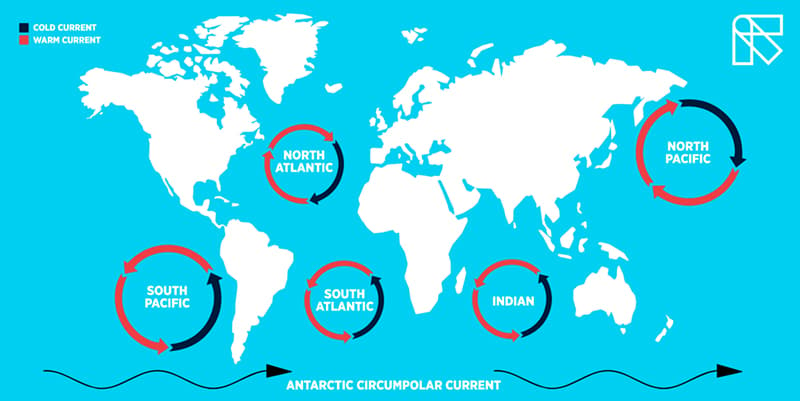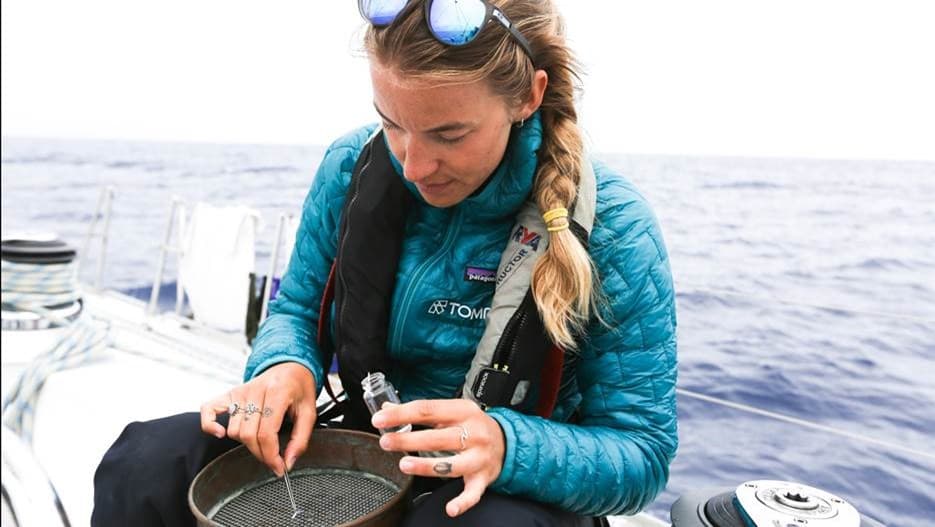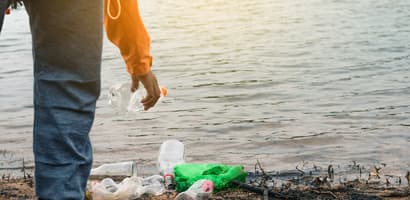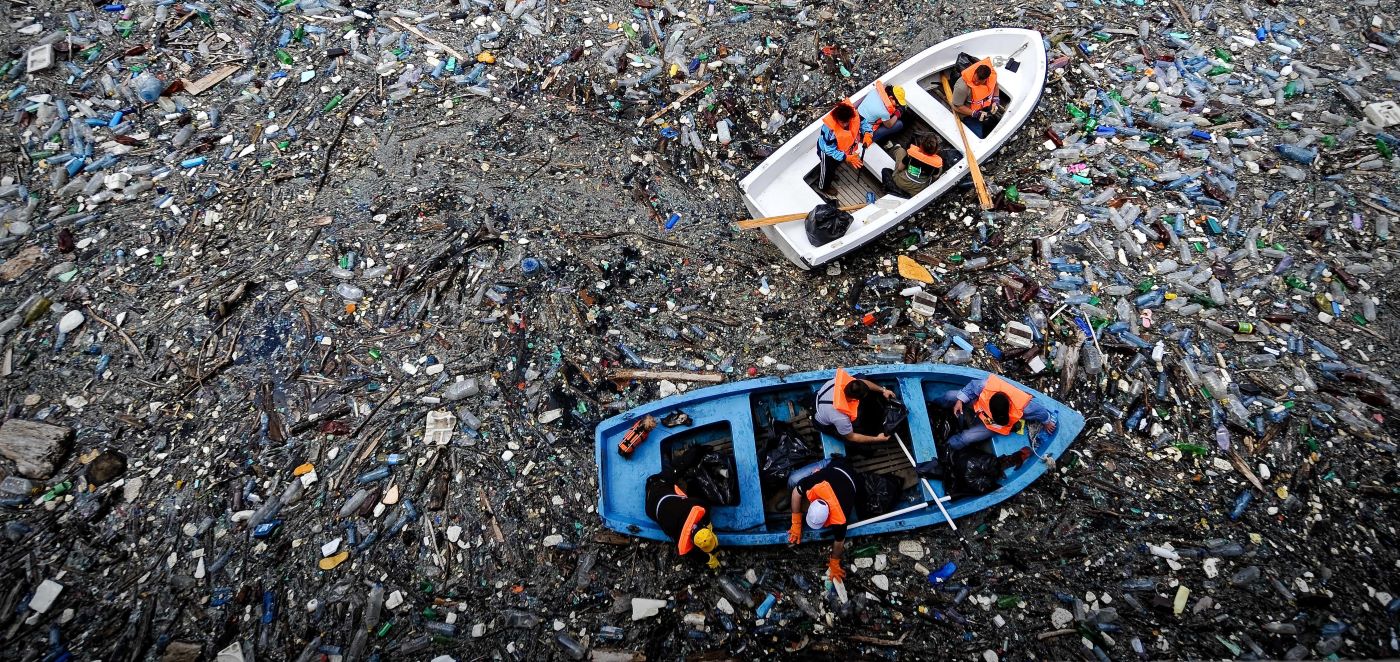Great Pacific Garbage Patch and ocean trash gyres
You have heard about plastic pollution in the oceans and the prevalence of microplastics, but where exactly do those microplastics end up? Join us as we take a deep dive into the ocean’s plastic “trash gyres”, including the largest of them all: the Great Pacific Garbage Patch.
What are the gyres?
Research has uncovered five major areas in the world’s oceans where large volumes of plastic gather, in what are known as oceanic gyres. An oceanic gyre is a system of circular currents created by wind patterns, tides, and differences in temperature. Plastics and other debris travel with the ocean’s currents, accumulate in these large zones out to sea, and then remain there for years – and even decades. These major plastic gyres are found in almost every ocean on the planet: the North and South Pacific, the North and South Atlantic, and the Indian Ocean.
Contrary to popular belief, the gyres do not form an island of garbage dense enough to stand on (nor can it be seen in satellite images, although this myth persists). A gyre is rather a massive, swirling vortex of microplastics. The plastics in the gyre turn the water into a soup, with a mixture of smaller and larger pieces. Most debris eventually sinks to the bottom of the ocean, making the waste difficult to see and research – and even harder remove.

What's in the trash gyres?
8 million tons of plastic from all over the world enter the ocean each year, as discovered in research led by Professor Jenna Jambeck: a University of Georgia director and National Geographic explorer. A lot of this plastic entering the oceans ends up accumulating in the major gyres.
Research done by The Ocean Cleanup Foundation shows that in addition to trillions of pieces of microplastics, gyres such as the North Pacific are also home to a significant number of larger objects, such as fishing ropes, nets, crates and baskets. Disposable objects can also be found, although these are typically less buoyant and therefore often sink before they make it far out to sea.
When plastic waste floats in the ocean, sun, waves, marine life and more will break the plastic down into smaller and smaller pieces. Large plastic objects will after a while turn into trillions of smaller microplastics. When plastic becomes this small, it becomes almost impossible to remove. Microplastics can be found everywhere in the ocean: from the ocean’s surface and all the way down to the ocean floor. These small plastics cause harm to marine animals because they mistake it for food, and cause problems for human life because our food gets contaminated with toxins from the plastic.
Diving into the trash gyres
TOMRA has been a sponsor of the eXXpedition ocean plastic research voyages. In 2018, eXXpedition sailed through the North Pacific Gyre – the largest of the gyres, also known as the Great Pacific Garbage Patch – on its journey from Hawaii to Vancouver. During the next eXXpedition research missions aiming to visit the other four of the world’s gyresTOMRA is serving as gold sponsor and on the scientific advisory board, providing industry expertise on land-based solutions to the plastic problem.
Kristine M. Berg, circular economy advisor at TOMRA Collection, joined 2018’s eXXpedition voyage through the Great Pacific Garbage Patch. “The sheer amount of microplastics (fragments smaller than 5 millimeters) we saw in our samples was daunting, and it was heartbreaking to realize that animals live in what is literally a plastic soup."
She explained, "But, when seeing toothbrushes and bottles out there, we also realized the good news – these objects once belonged to someone. And, since the problem is a result of millions of micro actions, so is the solution! What we do on land has a real and significant impact on our oceans.”

eXXpedition conducted ocean research of the gyres while out on the water, as well as land-based research to map the risk factors for plastic making its way from land into the oceans. The studies had three focus areas: surface water, sub-surface water and sub-tidal sediments. This research is extremely important because the amount of plastic in our oceans is only increasing, creating major problems for all life on earth.
We need to work together to find innovative solutions on how to remove waste from the ocean, and on how to keep it from entering the ocean in the first place.

Exxpedition research voyages measure and raise awareness of ocean plastic impacts

Under the microscope: Microplastics in the ocean


